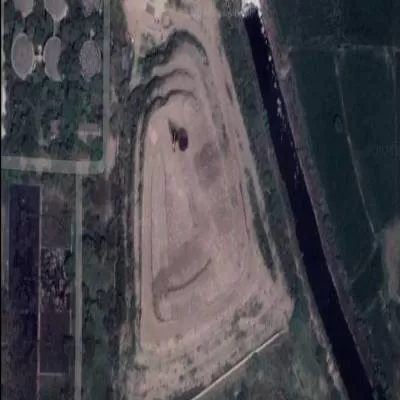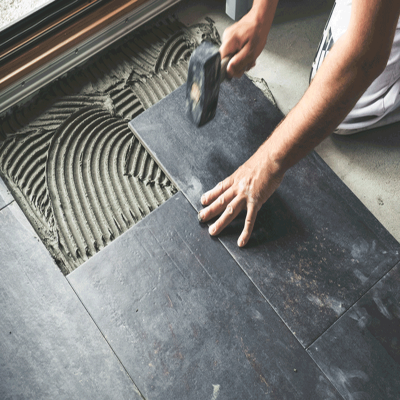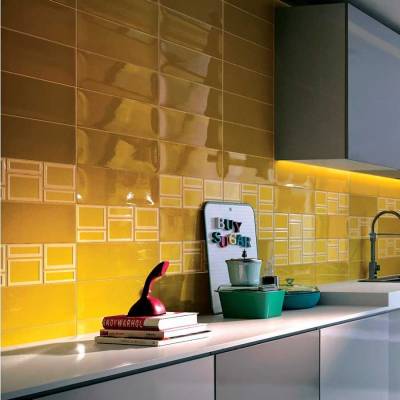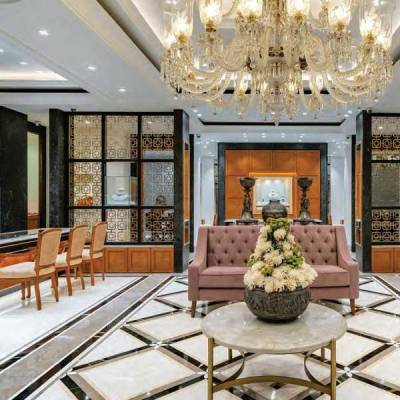- Home
- Building Material
- Tiles
- The Ground Beneath Your Feet
The Ground Beneath Your Feet
In the 31st of a clip-and-keep series on practical construction tips, Engineer Jagvir Goyal writes about granite and tile flooring.
1. While choosing granite, you must first decide whether you want textured surface granite, plain-looking granite or granite with lines or waves in it. Generally, dark-coloured black granite is preferred over the textured variety. For good quality, ensure there are no patches of discolouration, s or pinholes on the slabs. Now rub the surface with a piece of cloth dipped in kerosene oil or petrol. No colour should appear on the cloth after rubbing. If colour appears, it will prove that industrial oil has been rubbed on the slabs by the dealer to intensify the colour. Such granite will lose its colour in one or two months. This problem is generally faced with light-shaded granite so choose granite that is genuinely dark-coloured.
2. Here’s another tip on choosing granite: if you see circular marks on the back of the slabs, don’t buy them. The right way to cut granite is by water cutting with large mechanised saws. But, sometimes, kerosene cutters are used that leave circular patches of kerosene on the back of slabs. With the passage of time, this kerosene travels to the upper surface of granite leaving patches.
3. Check the thickness of the granite slab yourself. The supplier will put the thickness 2 to 3 mm higher than it actually is. You may have to make up for less thickness by unnecessarily filling the mortar below the slab. Granite is best for kitchen counters because it never loses its polish. It is a costly material and any relaxation on thickness should not be allowed.
4. Vitrified tiles are becoming very popular these days. These have very high dimensional accuracy, more abrasion resistance and are harder than ceramic tiles. They are produced from white imported clay. The press used to produce these tiles from clay applies 3,500 to 4,800 tonne weight on the clay. That’s why these tiles have no porosity. The more the weight applied, the better the tiles. Check the manufacturer’s pamphlet to know the figure. Pressed tile cakes are then burned at a high temperature of 1,220° C and then polished.
5. For polishing vitrified tiles, ultra-modern imported polishing machines are used. A polishing machine has many polishing heads, from 26 to 46. The more the number of heads, the better the polish. Again, check the manufacturer’s pamphlet.
6. There is such a huge variety of vitrified tiles available in the market that the consumer is often completely lost. Tile manufacturers are indulging in extensive advertising and all makes look branded. However, technically, RAK, Naveen, Granamite, Marbonite and Kajaria are the top brands followed by Somany, Johnson and Romano. Top quality tiles cost around Rs 80 to Rs 95 per sq ft while medium quality tiles are available for Rs 40 per sq ft also.
7. You can buy vitrified tiles as large as 8 ft × 4 ft. Bigger sizes give the feeling of vastness but are more expensive and less stronger than smaller sizes. Optimally, you should choose tiles that are 2 ft × 2 ft. Look at the back of tiles for the quality mark. Always choose the first quality of tiles rather than commercial quality. Commercial quality tiles are cheaper but suffer from defects that become apparent after a few months of use. Unlike ceramic tiles, there are no grades in vitrified tiles. However, there is a lot of choice in the top finish. Choose 9 to 10 mm thick tiles for better durability and strength. It is your choice whether to provide these tiles butting each other or to leave a gap between them and fill with a grout later. In residential areas, butting of tiles with minimum joint width is preferred.
8.Whenever you choose vitrified tiles for flooring, it is better to keep a few extra tiles in store. If ever a tile is broken or badly scratched (owing to pushing of furniture, etc), you may find it difficult to get the matching tile in the market. Variation in shade is a natural feature of these tiles. Though you may find safe storage of tiles a challenge, buy a box, scribble ‘vitrified tiles’ on the packing and put it in a loft. Normally, one box has four tiles of 2 ft × 2 ft size. Also note down the make and proportion of colour pigment mixed in white cement for jointing of tiles on the packing box.
9.Companies like Nitco now produce special vitrified tiles for use on staircase steps. These tiles have a length of 800 mm. For 1.2-m-wide steps, one full tile and a half tile can be used on every step, thus avoiding wastage. Tiles produced for risers are 158 mm wide. Therefore, in case you intend to provide vitrified tiles on steps, keep the riser depth as 166 mm — 8 mm of this will be used by the thickness of the tiles fixed on the tread and the balance 158 mm will be covered by the riser tiles. Thus, you must decide earlier if vitrified tiles are to be used on the steps and cast the concrete steps accordingly. Step or tread tiles are 318 mm wide. The best part of these tiles is that they carry an inbuilt nosing and you don’t have to get it made as in the case of marble. Keep the width of steps as 298 mm while laying the concrete base so that step tiles are fixed to cover the full width of steps and a nosing of 20 mm is available. Tiles provided on steps look beautiful. Choose matte or sand finish tiles so there are no chances of slipping.
10.While choosing ceramic tiles for bathroom and kitchen floors, choose anti-skid tiles. Ceramic tiles are classified in Group II, Group III, Group IV and Group V. Choose Group IV or V tiles for flooring and Group III tiles for walls. Group V tiles have maximum abrasion and slip-resistance; 300 ×300 mm size looks beautiful in kitchens and bathrooms though 400 mm× 400 mm size is also available. Thickness varies from 5 to 10 mm. Choose 7 mm to 10 mm thick tiles for flooring. Anti-skid tiles are cheap compared to other flooring and cost about Rs 30 per sq ft (including fixing) for Group IV tiles and about Rs 50 per sq ft for Group V tiles.
11.For bathroom walls, you can choose among ceramic tiles, glass tiles, glass mosaic tiles and hand-painted tiles. Among these, ceramic tiles are the cheapest and hand-painted tiles the most expensive. Choose Group III glazed tiles for walls. For glazing tiles, a mixture of glass and elements like feldspars, zirconium and zirflour is applied on raw tiles to give them a glassy look. Tiles are produced either by firing twice — first burning the tile biscuit and then again burning them with the glaze applied on it — or by firing them only once, with the glaze applied on them in the first instance itself. Tiles burnt singly are better; choose them for walls. The literature available with the supplier will tell you whether the tiles are single or double-fired. Ensure none of the tiles have broken edges.
In the 31st of a clip-and-keep series on practical construction tips, Engineer Jagvir Goyal writes about granite and tile flooring. 1. While choosing granite, you must first decide whether you want textured surface granite, plain-looking granite or granite with lines or waves in it. Generally, dark-coloured black granite is preferred over the textured variety. For good quality, ensure there are no patches of discolouration, s or pinholes on the slabs. Now rub the surface with a piece of cloth dipped in kerosene oil or petrol. No colour should appear on the cloth after rubbing. If colour appears, it will prove that industrial oil has been rubbed on the slabs by the dealer to intensify the colour. Such granite will lose its colour in one or two months. This problem is generally faced with light-shaded granite so choose granite that is genuinely dark-coloured. 2. Here’s another tip on choosing granite: if you see circular marks on the back of the slabs, don’t buy them. The right way to cut granite is by water cutting with large mechanised saws. But, sometimes, kerosene cutters are used that leave circular patches of kerosene on the back of slabs. With the passage of time, this kerosene travels to the upper surface of granite leaving patches. 3. Check the thickness of the granite slab yourself. The supplier will put the thickness 2 to 3 mm higher than it actually is. You may have to make up for less thickness by unnecessarily filling the mortar below the slab. Granite is best for kitchen counters because it never loses its polish. It is a costly material and any relaxation on thickness should not be allowed. 4. Vitrified tiles are becoming very popular these days. These have very high dimensional accuracy, more abrasion resistance and are harder than ceramic tiles. They are produced from white imported clay. The press used to produce these tiles from clay applies 3,500 to 4,800 tonne weight on the clay. That’s why these tiles have no porosity. The more the weight applied, the better the tiles. Check the manufacturer’s pamphlet to know the figure. Pressed tile cakes are then burned at a high temperature of 1,220° C and then polished. 5. For polishing vitrified tiles, ultra-modern imported polishing machines are used. A polishing machine has many polishing heads, from 26 to 46. The more the number of heads, the better the polish. Again, check the manufacturer’s pamphlet. 6. There is such a huge variety of vitrified tiles available in the market that the consumer is often completely lost. Tile manufacturers are indulging in extensive advertising and all makes look branded. However, technically, RAK, Naveen, Granamite, Marbonite and Kajaria are the top brands followed by Somany, Johnson and Romano. Top quality tiles cost around Rs 80 to Rs 95 per sq ft while medium quality tiles are available for Rs 40 per sq ft also. 7. You can buy vitrified tiles as large as 8 ft × 4 ft. Bigger sizes give the feeling of vastness but are more expensive and less stronger than smaller sizes. Optimally, you should choose tiles that are 2 ft × 2 ft. Look at the back of tiles for the quality mark. Always choose the first quality of tiles rather than commercial quality. Commercial quality tiles are cheaper but suffer from defects that become apparent after a few months of use. Unlike ceramic tiles, there are no grades in vitrified tiles. However, there is a lot of choice in the top finish. Choose 9 to 10 mm thick tiles for better durability and strength. It is your choice whether to provide these tiles butting each other or to leave a gap between them and fill with a grout later. In residential areas, butting of tiles with minimum joint width is preferred. 8.Whenever you choose vitrified tiles for flooring, it is better to keep a few extra tiles in store. If ever a tile is broken or badly scratched (owing to pushing of furniture, etc), you may find it difficult to get the matching tile in the market. Variation in shade is a natural feature of these tiles. Though you may find safe storage of tiles a challenge, buy a box, scribble ‘vitrified tiles’ on the packing and put it in a loft. Normally, one box has four tiles of 2 ft × 2 ft size. Also note down the make and proportion of colour pigment mixed in white cement for jointing of tiles on the packing box. 9.Companies like Nitco now produce special vitrified tiles for use on staircase steps. These tiles have a length of 800 mm. For 1.2-m-wide steps, one full tile and a half tile can be used on every step, thus avoiding wastage. Tiles produced for risers are 158 mm wide. Therefore, in case you intend to provide vitrified tiles on steps, keep the riser depth as 166 mm — 8 mm of this will be used by the thickness of the tiles fixed on the tread and the balance 158 mm will be covered by the riser tiles. Thus, you must decide earlier if vitrified tiles are to be used on the steps and cast the concrete steps accordingly. Step or tread tiles are 318 mm wide. The best part of these tiles is that they carry an inbuilt nosing and you don’t have to get it made as in the case of marble. Keep the width of steps as 298 mm while laying the concrete base so that step tiles are fixed to cover the full width of steps and a nosing of 20 mm is available. Tiles provided on steps look beautiful. Choose matte or sand finish tiles so there are no chances of slipping. 10.While choosing ceramic tiles for bathroom and kitchen floors, choose anti-skid tiles. Ceramic tiles are classified in Group II, Group III, Group IV and Group V. Choose Group IV or V tiles for flooring and Group III tiles for walls. Group V tiles have maximum abrasion and slip-resistance; 300 ×300 mm size looks beautiful in kitchens and bathrooms though 400 mm× 400 mm size is also available. Thickness varies from 5 to 10 mm. Choose 7 mm to 10 mm thick tiles for flooring. Anti-skid tiles are cheap compared to other flooring and cost about Rs 30 per sq ft (including fixing) for Group IV tiles and about Rs 50 per sq ft for Group V tiles. 11.For bathroom walls, you can choose among ceramic tiles, glass tiles, glass mosaic tiles and hand-painted tiles. Among these, ceramic tiles are the cheapest and hand-painted tiles the most expensive. Choose Group III glazed tiles for walls. For glazing tiles, a mixture of glass and elements like feldspars, zirconium and zirflour is applied on raw tiles to give them a glassy look. Tiles are produced either by firing twice — first burning the tile biscuit and then again burning them with the glaze applied on it — or by firing them only once, with the glaze applied on them in the first instance itself. Tiles burnt singly are better; choose them for walls. The literature available with the supplier will tell you whether the tiles are single or double-fired. Ensure none of the tiles have broken edges.























